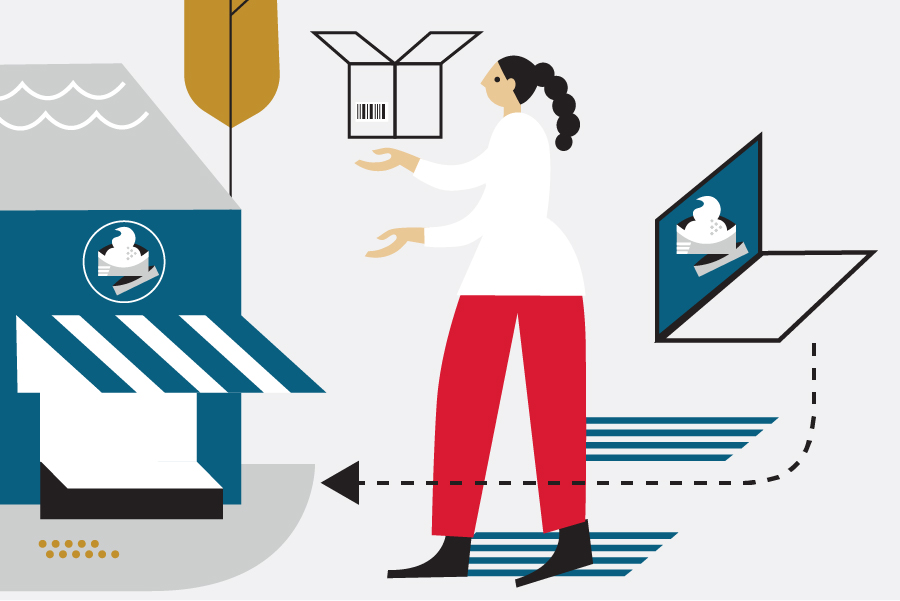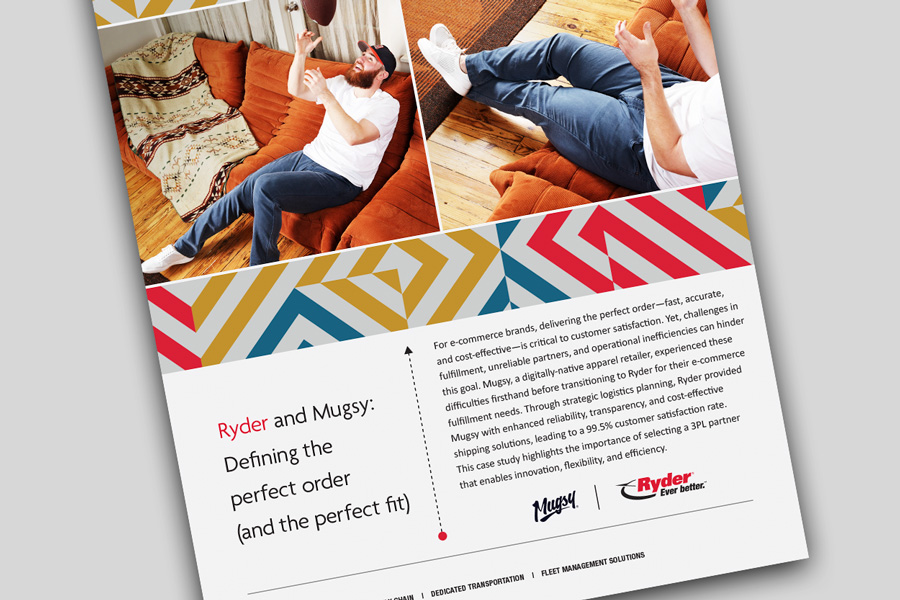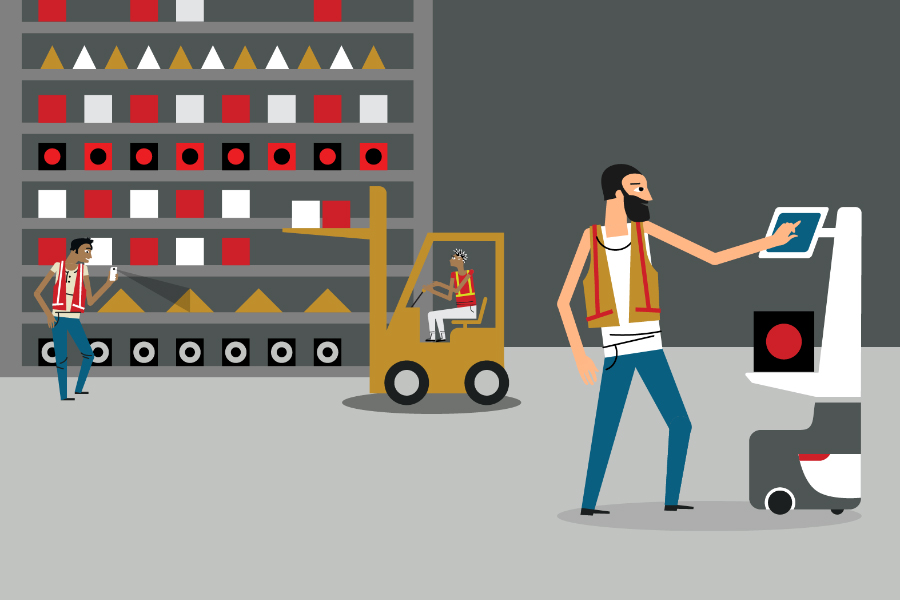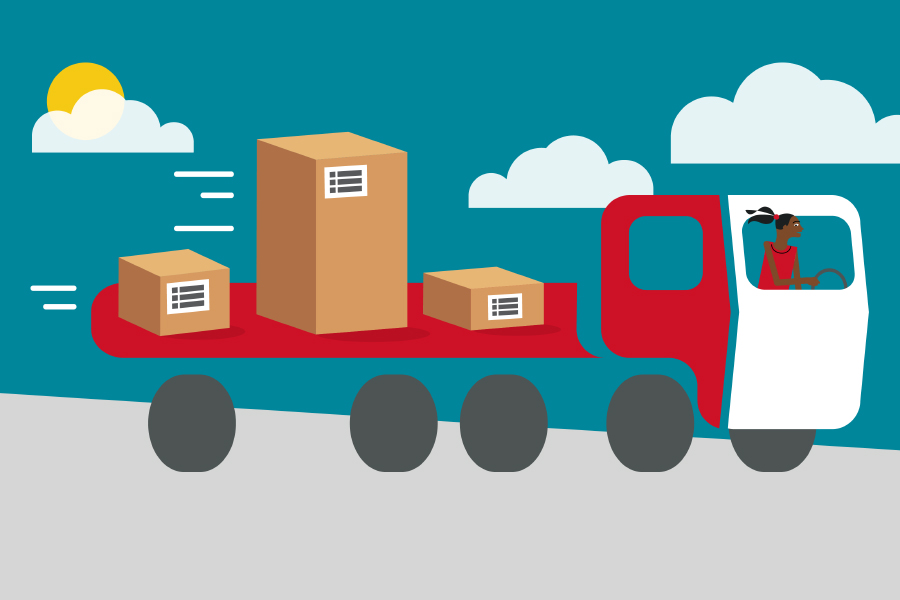Online shopping is prized by consumers for its convenience. But there's one part of the e-commerce experience that isn't: returns.
Where purchasing online is designed to be easy, the process for returning items is not. Whether it's complex returns portals or having to pay for return shipping, the return experience is filled with pain points that have a negative impact on the customer experience.
So, what is the best way to increase customer satisfaction and customer loyalty during the return process? By introducing a BORIS service.
What is BORIS?
BORIS is an acronym for 'Buy Online Return In-Store'. It's an omnichannel strategy where consumers can buy goods online and return them to a store location or alternative drop-off point.
BORIS belongs to a wider group of O2O ('online-to-offline') retail services, including BOPIS (Buy Online Pickup In-Store) and ROPIS (Reserve Online Pickup In-Store). The purpose is to streamline the return process for customers by enabling them to return items as they see fit.
BORIS: The solution to poor returns experiences
It's difficult to overstate the impact that hassle-free returns have on the customer experience; 92% of consumers say they would buy from a retailer again if the returns process is easy to navigate.
The takeaway? If you can coordinate a seamless return process, your customer retention will increase.
Yet research shows that this isn't happening in practice.
Nearly three-quarters of consumers surveyed by Doddle say that retailers aren't offering a satisfactory return experience. Respondents highlighted the following as reasons for not shopping with a retailer again:
- If they had to pay shipping fees to return an item (60%)
- If it took a long time to secure a refund on their return (40%)
- If they need to obtain a return authorization from customer support (32%)
- If they were not able to track a returned item (30%)
These results are problematic when returns are such an important touchpoint in the post-purchase experience. If you don't offer a return experience that's easy to navigate, that's a lot of customers who won't be returning to shop with your brand.
But there's an approach to returns that enables your brand to eliminate all of the pain points listed above; offering customers an in-store return option.
5 Reasons why your store should be offering BORIS
1. Omnichannel enhances the in-store experience
When brands invest in omnichannel capabilities, storefronts transform from cut-outs of online catalogs to the nexus between selling channels.
As online sales boomed over the past year, we've seen storefronts pressed into service as fulfillment facilities, locations for curbside pickup, and as spaces for social media-led research. Consumers can come in to browse products they plan to order online later or to place orders for items to be delivered at home.
In short, omnichannel retailing gives customers more reasons to come into a physical store and be immersed in your brand. According to Google, Omnichannel retailing results in an 80% higher rate of incremental store visits - yet 84% of consumers believe retailers should be doing more to integrate their online and offline channels.
By adding in-store returns into the mix, you'll be even better placed to serve customers at every stage of the shopping journey.
2. Consumers want to spend more time in stores
Far from killing off brick and mortar stores, the COVID-19 pandemic has demonstrated just how indispensable physical retail is to the customer experience.
According to a survey by Shopkick conducted in May, 74% of consumers report shopping online less frequently than they did a month ago, while 62% feel more comfortable shopping in-store now compared to the same time last year.
Having been starved of immersive shopping experiences, it's not surprising that consumers are returning to brick and mortar in huge numbers. But this also means that expectations are high. They want the same level of seamlessness they receive online - and this includes the returns experience.
3. It removes friction from the post-purchase experience
Even with the very best automation and customer care, online returns are full of friction for ecommerce shoppers.
Many return policies prevent customers from initiating returns themselves. If they're forced to wait multiple days for a return authorization, this results in an avoidable slowdown of the entire returns workflow.
Even once a return has been accepted, there's still a lot of hassle to come. For example, unless your brand is using return-ready packaging, your customer will need to source their own box or poly-mailer to send items back. When 62% of consumers get very frustrated by having to pay for return packaging, you risk evoking negative feelings towards your brand.
By offering BORIS, you can avoid these issues entirely. Almost half of consumers who rated their return experience as 'easy' in Narvar's 2020 study had the option of dropping off returned items at a convenient location. Customers can simply walk into their nearest returns location and have their return and refund processed at the same time, leaving them ready to start a fresh sales cycle in that same store visit.
4. Saving on shipping costs
If there's one thing that consumers hate in ecommerce, it's shipping fees. Shipping costs are the number one reason for cart abandonment, with 82% of consumers saying that they expect free shipping to be available.
When a customer needs to return an item, it can add insult to injury to force them to pay for return shipping - especially when a product is broken or defective. On the other hand, absorbing both outbound and return shipping costs is not feasible for many retailers.
BORIS is the best way for merchants to solve this costly stalemate. By offering your customers an avenue for accessing free returns, it's much easier to justify charging for return shipping if they choose this option.
5. Opportunities for cross-selling/upselling
The biggest benefit of in-store returns is that it offers a valuable opportunity for store associates to turn lost online purchases into revenue. Because if a customer's initial purchase didn't work out, it's very likely that they'll be looking for a replacement.
When you get to interact with your customers in person, it's far easier to draw attention to alternative options, such as exchanging for a different color or upselling customers into higher-value replacement items. This enables you to turn a potentially negative brand experience into a positive one that brings customers back to shop in the future.
Best of all, BORIS can even pave the way for additional purchases. When 75% of shoppers using click and collect services end up buying extra items, it's safe to say that customers returning in-store will experience the same impulse. By enticing customers to spend more time in your store, there's a much higher likelihood of conversions.
3 Ways to optimize Buy Online Return In-Store
Set up a dedicated area for in-store returns
To make BORIS as seamless as possible, it's a good idea to set up a separate POS which is dedicated to in-store returns. You should also have plenty of in-store signage that directs customers to the right counter to avoid any confusion.
A separate counter ensures that returns are processed quickly and won't slow down getting in-store sales through the checkout. Allocating specific store associates to handle the returns process also helps you to maximize opportunities to upsell and encourage additional purchases.
Real-time inventory visibility
To understand what’s happening with your in-store returns, it's vital to have an inventory system that’s capable of real-time tracking. By knowing exactly how many units of returned stock you have at each location, it's much easier to make informed decisions about whether returned items should be sent back to your warehouse or returned to the shelf.
Having inventory in the optimum location for rapid home delivery or curbside pickup also keeps products moving efficiently and minimizes the risk of excess inventory piling up.
Use a returns management tool
Believe it or not, you don't need independent store locations to take advantage of BORIS. There are now several returns management systems that allow digitally native merchants to offer in-store returns via key locations, such as pharmacies or big-box retailers.
Ryder partner Happy Returns offers an extensive national network of 'return bars' where customers can return items in-person at a convenient location. Customers don't need to provide return packaging and can initiate an exchange or a refund in the same visit. It's an easy way to enhance the return experience and beat giant online retailers like Amazon at their own game.
Regardless of whether you're an emerging or established brand, BORIS has something to offer your business. The biggest advantage of omnichannel strategies like BORIS isn't merely streamlining the return experience; it gives brands the ability to shape consumer behavior by rewarding customers who engage in the most efficient shopping methods. BORIS helps your brand to cut fulfillment and shipping costs, increase customer satisfaction in the return experience, and bring customers back to shop again.
After all, there's nothing like the lure of easy returns to persuade customers to click 'purchase' on their shopping cart.




